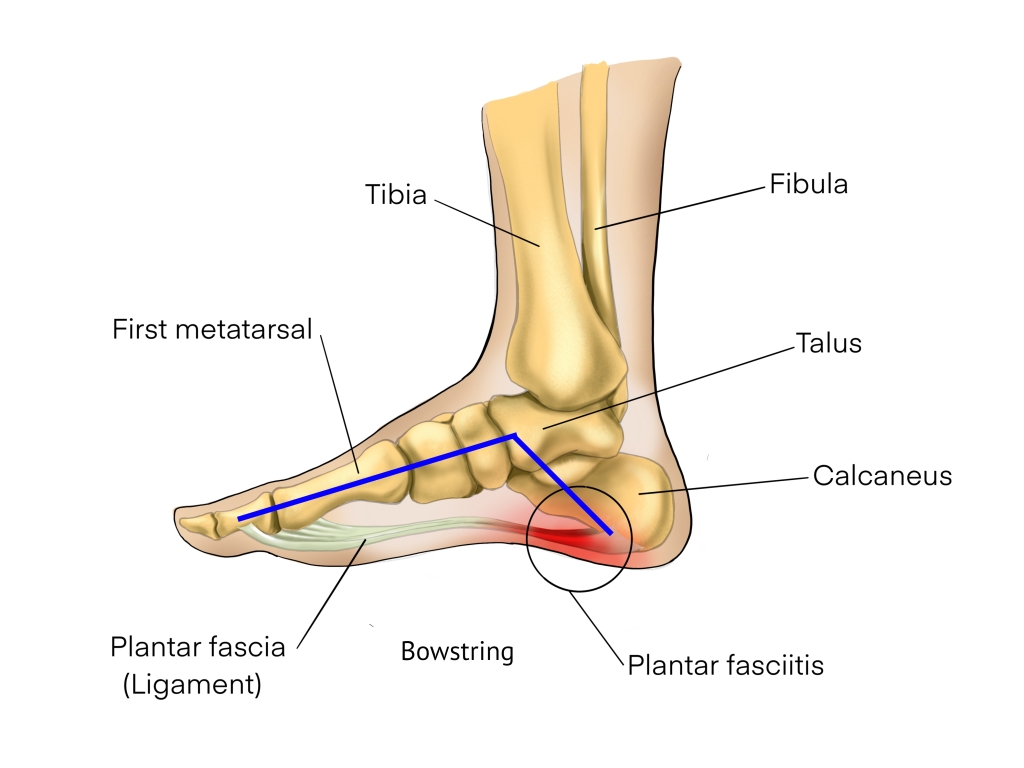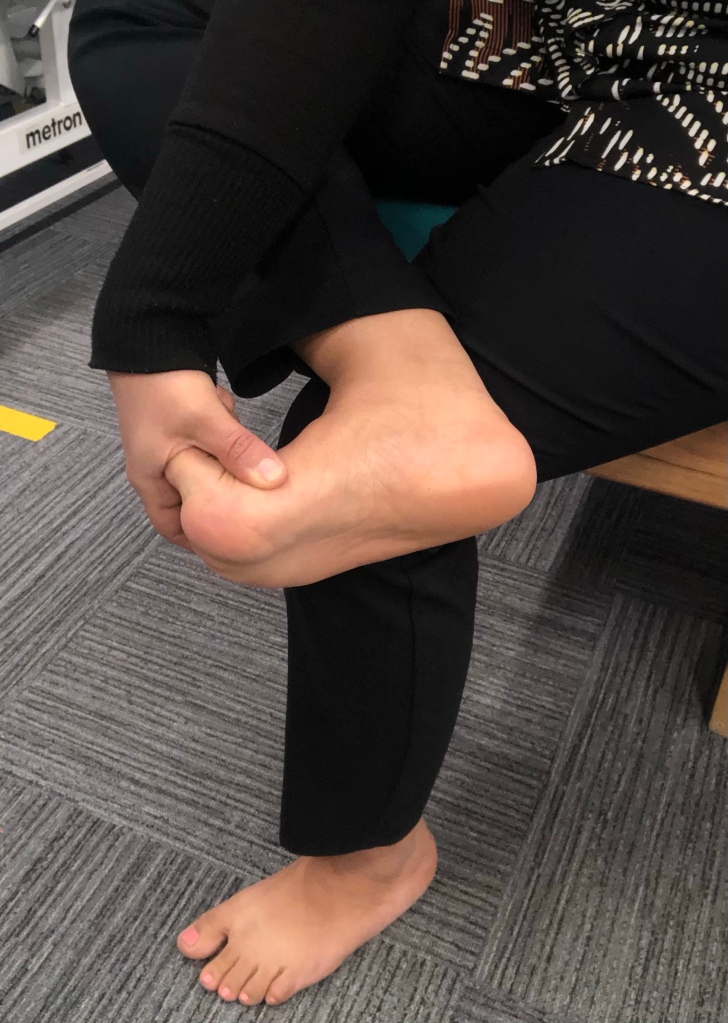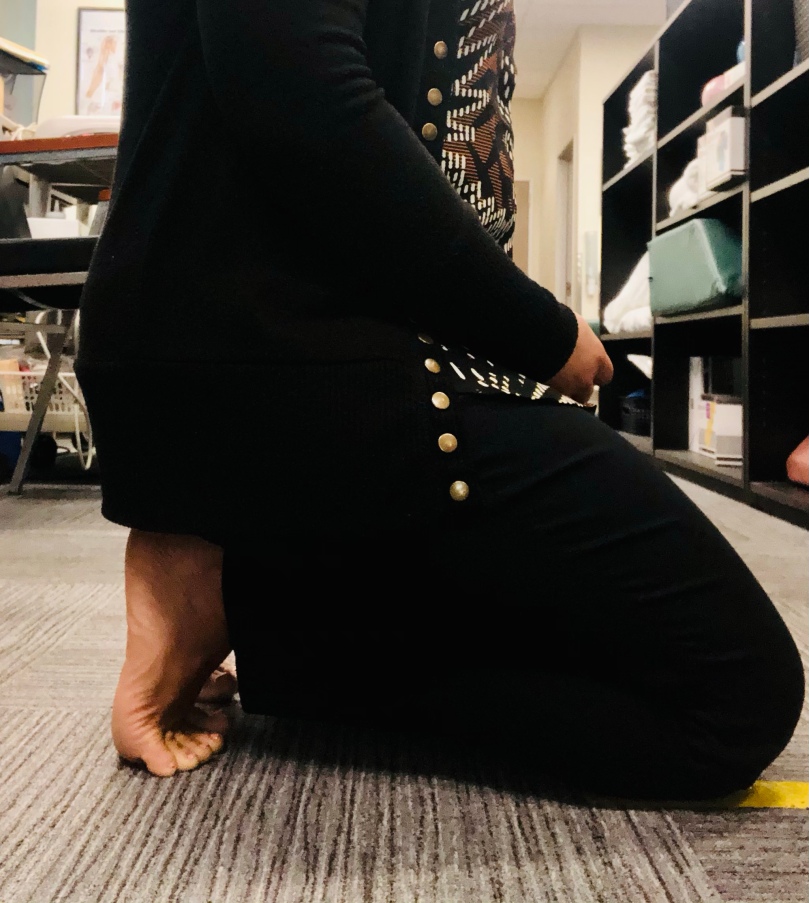Here’s a scenario that I have heard several times over the years. Maybe you are familiar with it.
After a long hopefully restful sleep, you sit up in your bed in the morning. You swing your legs off the bed to get going. Wince…As soon as you put that foot down and stand up you feel that sharp pain in your heel and sole of the foot. You are limping around for several minutes before the pain calms down and it feels normal again.
What is it? Why does my foot hurt? Is it Normal to feel this in the morning?
What I described is classic symptom of condition known as plantar fasciitis.
Along the sole of your foot, there is a thick fibrous band of tissue called plantar fascia. It extends from the ball of your toes to the heel bone. This band assists the muscles of the foot to prevent flattening of the arches. It acts as a shock absorbing bowstring supporting the arch of the foot. But when the plantar fascia gets overstretched, inflamed or torn, it can be quite painful. The pain is mostly concentrated in the heel where it attaches to the bone.
What causes plantar fasciitis? Firstly, fasciitis is not the correct term. It implies acute inflammation, which is probably present in early stages only. But it’s more of plantar “fasciopathy”. A discussion for another day!
Each normal foot has 26 bones, 33 joints, 19 muscles. Which means quarter of your body’s bones are in your feet. There are complex biomechanical stuff going on in those feet every time you step on them. The arch of your foot is like a bow and the plantar fascia is the string of that bow. Tension in plantar fascia (the bowstring) holds the shape of the arch (the bow), Every time you step, the string stretches and when stretched too hard or too often the string gets irritated and you feel the pain in your foot/heel.

There are several reasons what can cause increased tension in the plantar fascia to irritate it. Tight Calves, Heel Spurs, Flat feet or even high arch can irritate the plantar fascia. The reasons always do not lie in the foot- Issues in Hips, knees, or back causing even subtle change in walking pattern can trigger off this pain.
What’s so special about the mornings? At night time, the foot is is relaxed position. The plantar fascia and the calf muscles contract in their resting position. This can also happen when you are sitting at your desk for extended period of time or binge-watching Netflix for hours (Don’t you hate it when Netflix asks “Are you still watching?” UUhh Yes I am!). When you stand up again, suddenly the injured, contracted plantar fascia finds itself stretching under the full force of your body weight and it is not ready for that action. The pain is triggered off and it takes several minutes for the plantar fascia to loosen up to the point where the pain is not so sharp.
Is it Normal? Absolutely not. Is it common? Definitely Yes. Heel pain is not something you accept as you age, or work certain jobs. It is Abnormal and if you have it, you need to get help for it.
What can you do about it? The good news is that this can be addressed with conservative treatment. Consider working with a Physical Therapist to get to the root cause of the issue. As I mentioned above, there can be several reasons why that bowstring in your foot is angry. We help you with techniques to calm down that pain and assess body mechanics to avoid reinjuries. Along with foot exercises, you might need some knee or hip muscles strengthening or stretching as well.
While a customized treatment plan is best, these are some simple exercises for anyone suffering from plantar fasciitis.
- Ankle Pumps

Bend you foot up and down at your ankle joint. Repeat 10-15 times.
- Plantar fascia stretch (seated)

While seated, place your affected side ankle on top of your other leg. Then hold your toes and bend them back into extension as shown. Feel for a gentle stretch to your toes and sole of the foot (plantar fascia). Hold for 10-15seconds, Repeat 5-8 times.
- Calf stretch

Start by standing in front of a wall or other sturdy object. Step forward with one foot and maintain your toes on both feet to be pointed straight forward. Keep the leg behind you with a straight knee during the stretch. Lean forward towards the wall and support yourself with your arms as you allow your front knee to bend until a gentle stretch is felt along the back of your leg that is behind. Move closer or further away from the wall to control the stretch of the back leg. Also you can adjust the bend of the front knee to control the stretch as well. Hold for 10-15seconds, Repeat 5-8 times.
- Tennis ball Roll/ frozen water bottle roll

While seated, place a tennis ball under the arch of your foot and press into it while rolling it around.
Use this technique with a frozen water bottle as well. Roll the bottle from toes to heel.
Use as much pressure as you can tolerate without discomfort.
- Plantar fascia stretch (kneeling)

In a kneeling position, curl the toes of one foot keeping weight on ball of your foot.. Slowly sit into your heels until a pull is felt in the bottom of the foot. You may also move the heel back and forth by inching forward and backward until a greater pull is felt.
Do the first 4 exercises as your morning routine (or after a long period of inactivity) before you think of hobbling around with a painful heel.
Wear over the counter shoe inserts. Inserts should support your foot arch and relieve the strain on your Plantar fascia. There is rarely a need for custom shoe inserts for plantar fasciitis. A study has shown prefabricated inserts in conjunction with a stretching program is likely to produce improvement than a custom insert.1
Rest– One of the most important thing to do but often overlooked is resting your foot. If you are a runner/dancer/jogger/walker, slow down, cut back your miles or stop completely until this pain gets better. It could be weeks or months, but allow the tissue to heal. Maintain fitness by other exercises like cycling, swimming- exercises that do not cause impact on your foot.
Can you prevent this? We can always try right!
- Stretch calf muscles and Plantar fascia regularly.
- Wear appropriate shoes- Your footwear should give you ample arch support, heel cushion and should have a flexible midsole. A shoe should give enough support but also allow natural movement. A 2.5 inch heel can increase the load on forefoot by 75%.2 Not too high and not too flat is the motto for good footwear.
- High impact activities like Running, Dance or other sports should be followed with enough rest and recovery time. Massage and stretch the plantar fascia after.
- Maintain healthy weight. The correlation is obvious- the heavier you are, the more weight and stress your heel has to manage with every step you take and every minute you stand.
Don’t Let the pain ruin start of your day. Take control of your mornings back!!
- Pfeffer G, Bacchetti P, Deland J, et al. Comparison of custom and prefabricated orthoses in the initial treatment of proximal plantar fasciitis. Foot Ankle Int. 1999;20(4):214-221. doi:10.1177/107110079902000402
- Hong W-H, Lee Y-H, Chen H-C, Pei Y-C, Wu C-Y. Influence of Heel Height and Shoe Insert on Comfort Perception and Biomechanical Performance of Young Female Adults During Walking. Foot & Ankle International. 2005;26(12):1042-1048. doi:10.1177/107110070502601208



Nice piece of information.
LikeLike